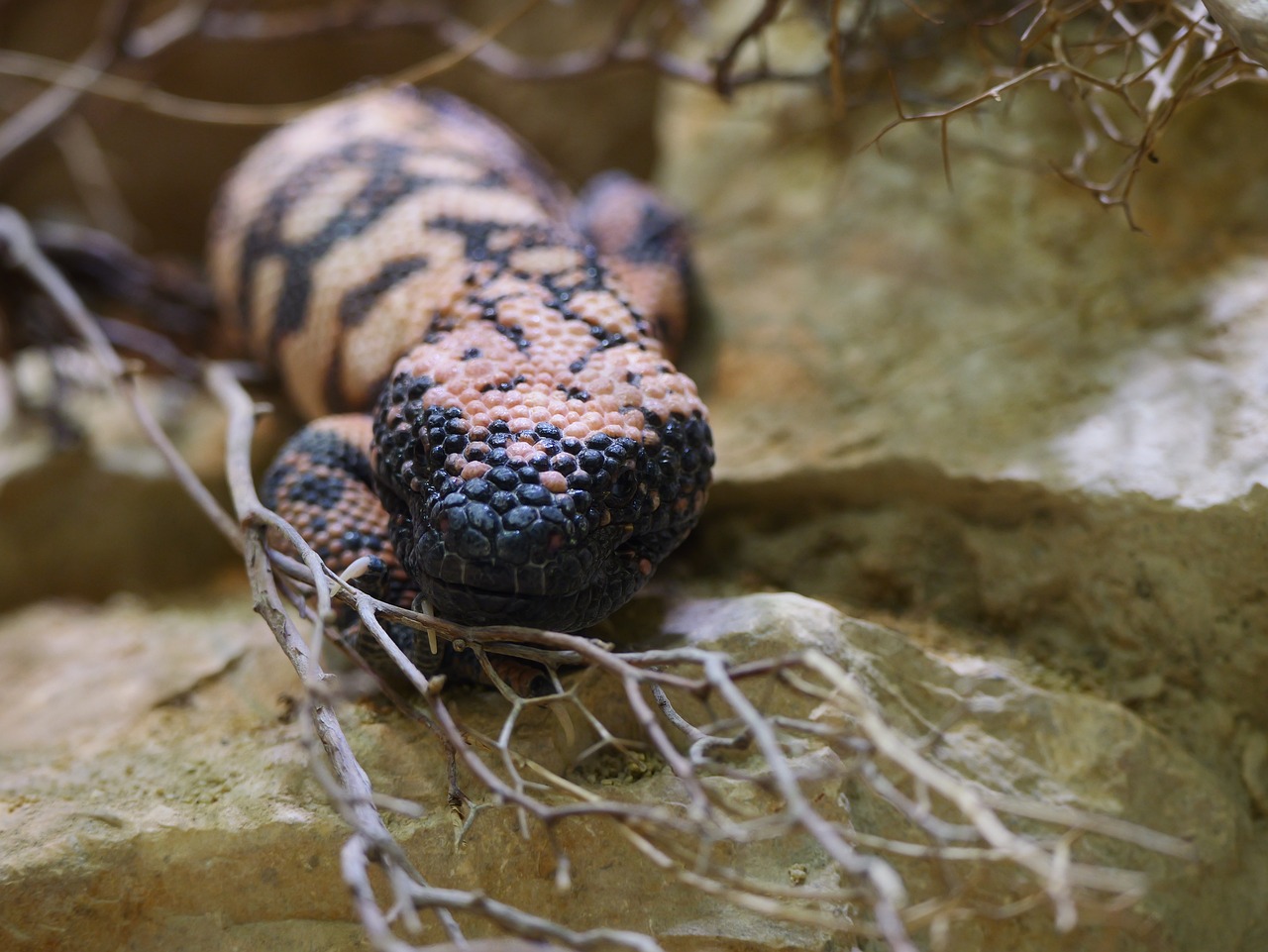When we think of animals that live in desert ecosystems, we often think of reptiles. Many reptiles have special adaptations that allow them to survive in the extreme heat and low humidity of deserts around the world.
Shovel-snouted Lizard
In the Namib desert, the sun’s rays strike the sand, heating it to temperatures that are too hot for most animals. The shovel-snouted lizard (Meroles anchietae) has found a way to cool his feet from the hot surface of the sand… It simply raises its limbs one by one in a dance that is timed to the rhythm needed to cool each foot, then place it back on the sand to be able to raise the next foot, and so on and so on. When each foot is in the air, the lower air temperature efficiently cools down the toes very quickly. Sometimes this lizard even raises all legs at once and balances on his belly, like a particularly daring sky diver on the sand dunes.
When the temperatures get too hot even to survive by dancing, this lizard uses his shovel-shaped nose to burry under the loose sand of the dunes, giving it the name “Namib sand-diver”. The temperatures down there are much lower than those at the surface, and the shovel-snouted lizard has barely enough air to survive by breathing from the tiny air pockets that form naturally between the grains of sand.
Chuckwalla
Another natural danger in the harsh desert landscape are predators. In the south western parts of North America, the chuckwalla (Sauromalus ater) evades this threat by wedging itself between rocks and in crevasses. The really special skill of the chuckwalla is the ability to breathe in a lot of air, inflating itself to make sure it is properly stuck between the rocks. This thick-skinned dragon of the desert is also a food delicacy for some human tribes, so this adaptation surely comes in useful.
Bearded Dragon

Image credit: Milchdrink. Bearded dragon.
Pogona vitticeps
Much-loved as a pet, the bearded dragon (Pogona sp.) native to Australia, survives the hot climate of his homeland by adjusting the color of his back to maintain the perfect 35 degrees C (95 degrees F) internal temperature. When it’s too cold, the bearded dragon can change to a darker color to be able to capture more heat from the sun. Darker surfaces trap more energy from the sun and light surfaces bounce the heat from the rays back into the atmosphere. This property is called albedo. When the bearded dragon gets too hot, it can adopt a light yellow color and help it reflect more light. But why is it so important for reptiles to maintain a specific temperature? Because they are ectothermic, meaning that they have to rely on the environment to cool down or heat up.
California Kingsnake
The California Kingsnake (Lampropeltis californiae), although it can bite, is nonvenomous. But it has found another way to protect itself through the use of mimicry. Behavioral mimicry is when one animal acts like another species. The California Kingsnake has evolved to curl into a ball and shake its tail to mimic the scary tail-rattle of the venomous rattlesnakes that inhabit the same area. The Kingsnake hopes that predators will not stick around long enough to realize that the Kingsnake is mostly harmless.
Gila Monster
One very venomous reptile is the Gila monster (Heloderma suspectum), but luckily for other animals, they choose to live 90% of their lives underground. At the beginning of each summer, they move more than once per week to different burrows, testing which burrow has the best living conditions. They run about 200 meters (close to half a mile) each time they move to find a place to live where their skin’s temperature can stay at a healthy 30 degrees C (86 degrees F). Each move is a dangerous undertaking: the Gila monster is a good runner, but out on the surface, faces the threat of coyotes and badgers. The Gila monster doesn’t even need to come to the surface to eat very often. Just a few times per year, these reptiles can eat a large meal, such as a rodent, bird, or other reptile, storing its energy in fat deposits in its tail. Young Gila monsters can even eat a meal that is half of their own weight. When they eat, the venom comes out of a gland next to the bottom teeth, so that when the sharp teeth chew the food, the painful venom enters into their prey with each bite.

Image credit: RoyBuri. Gila monster.
Thorny Devil
On the other hand, the thorny devil (Moloch horridus), a spiny little creature, prefers to eat ants for each meal of the day. Since ants don’t have a high moisture content, the thorny devil has the ability to collect dew from the air on its spines. The water droplets run down ridges between the spines and are absorbed into its body, allowing the thorny devil to survive in the dry conditions of parts of Australia. If there’s not enough moisture in the air, the thorny devil rubs itself in soil to absorb some water from the soil into its skin.

Image credit: PublicDomainImages. Thorny devil.
Moloch horridus
Next time you think about deserts, remember these resilient reptiles and their extraordinary strategies for thriving in some of Earth’s harshest environments. The natural world never ceases to amaze with its diverse and ingenious solutions for survival.
© 2023 All rights reserved.

